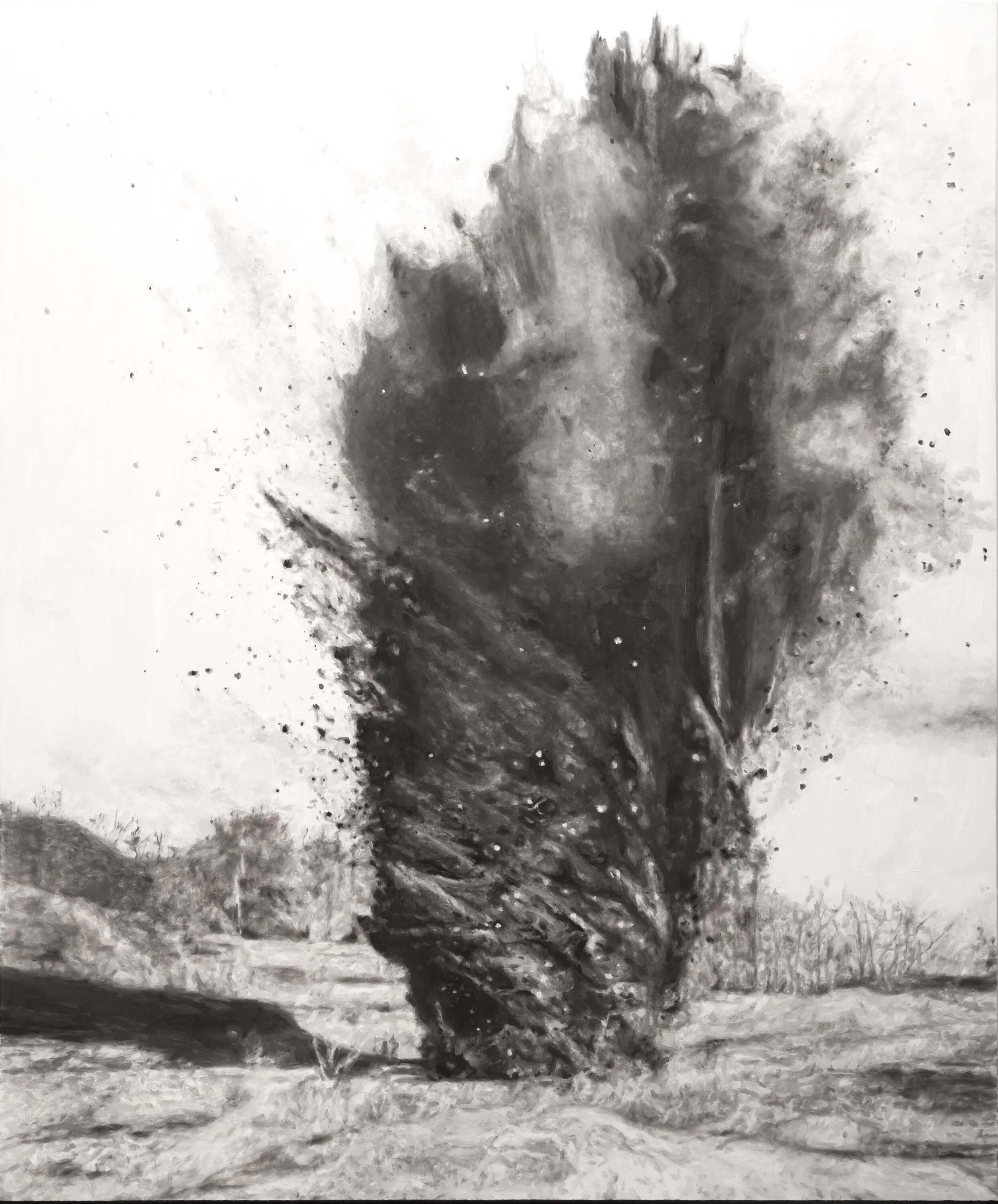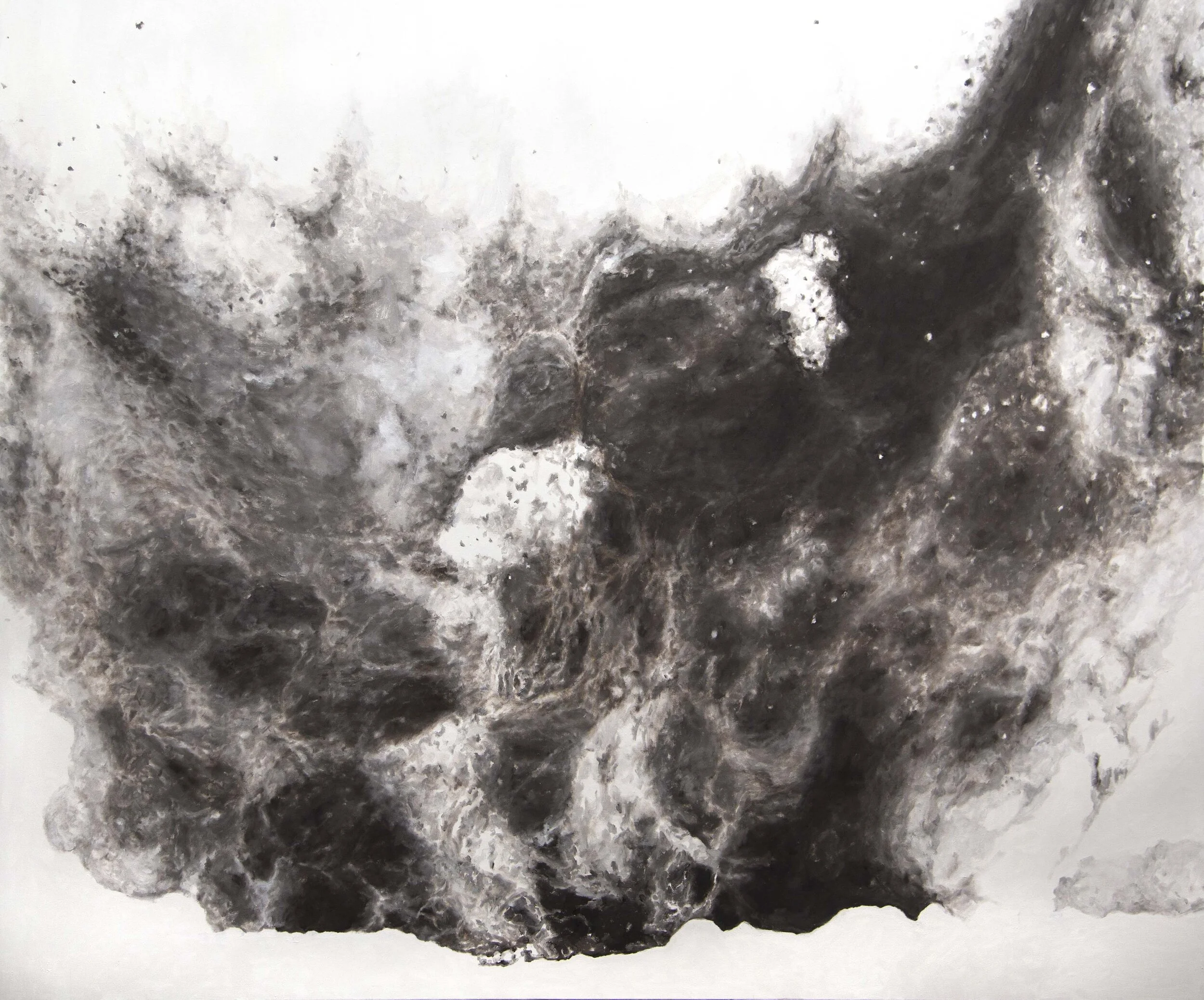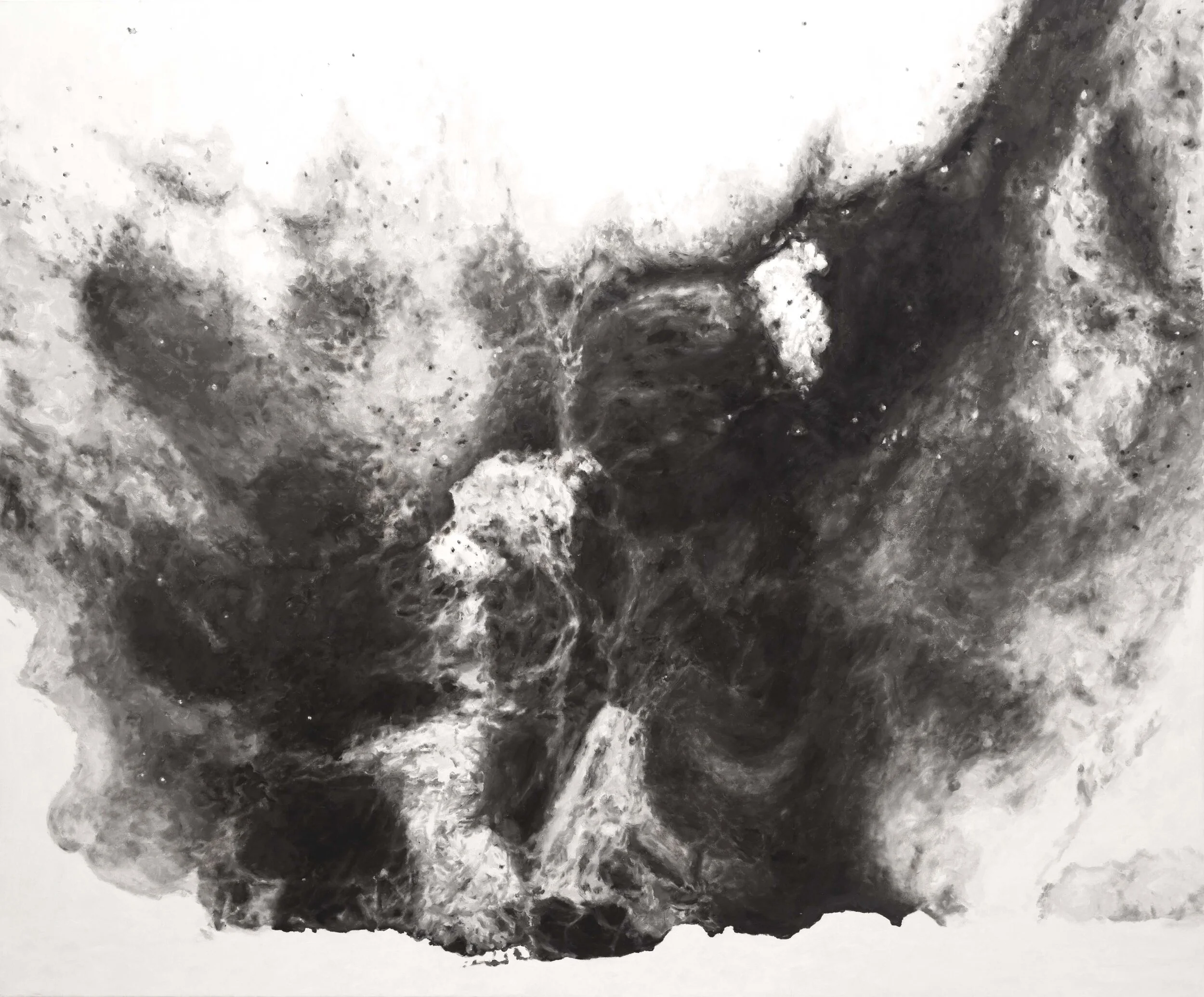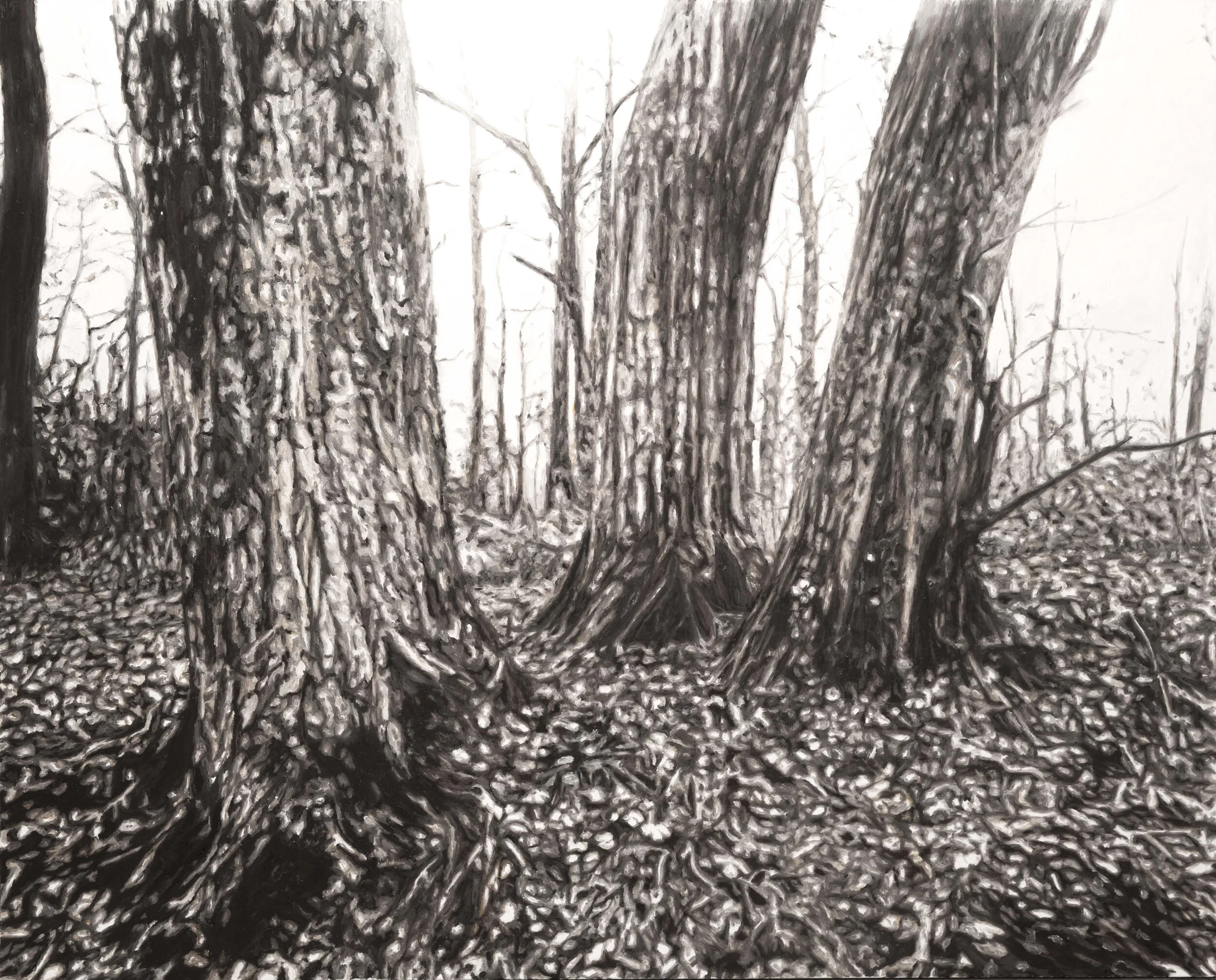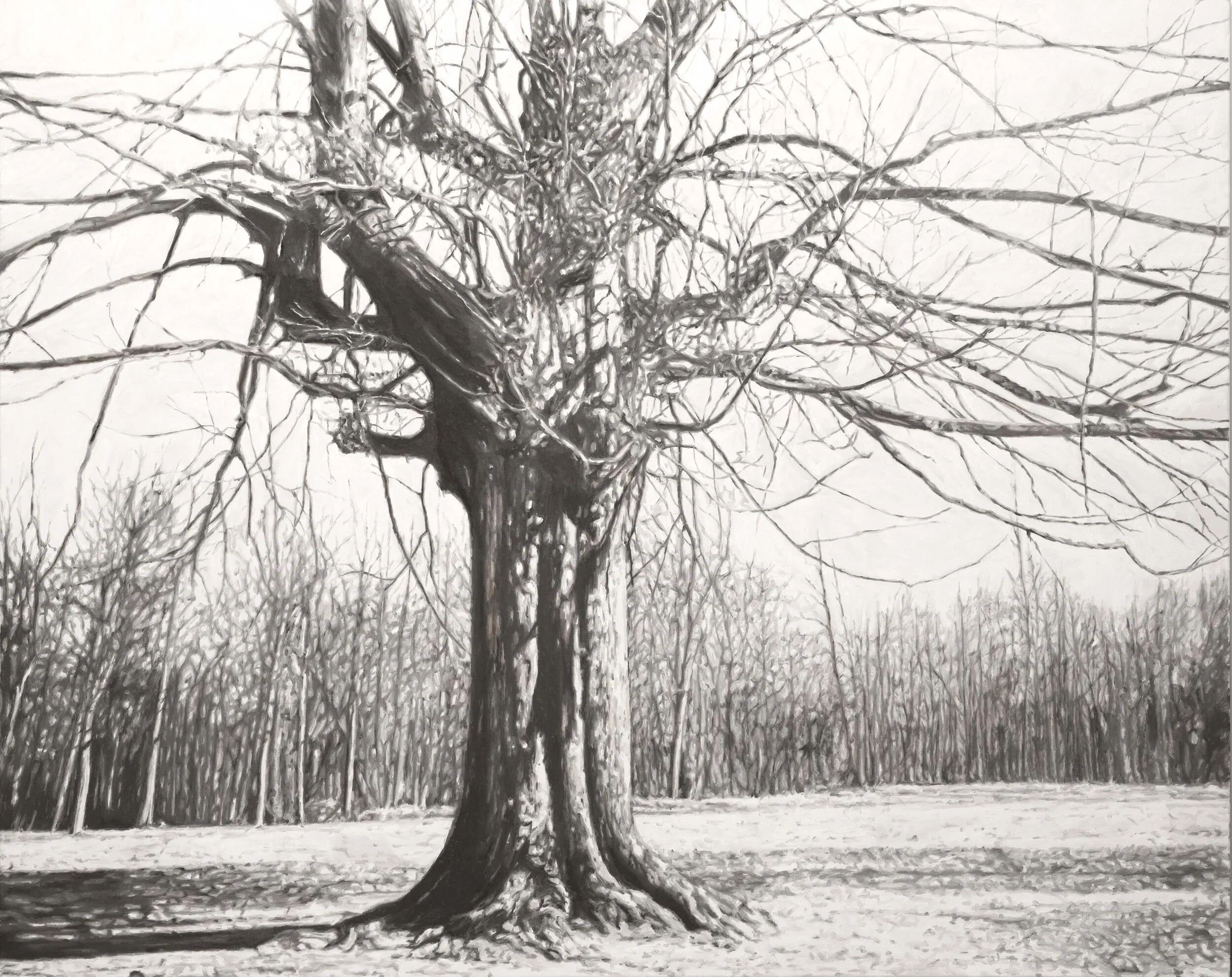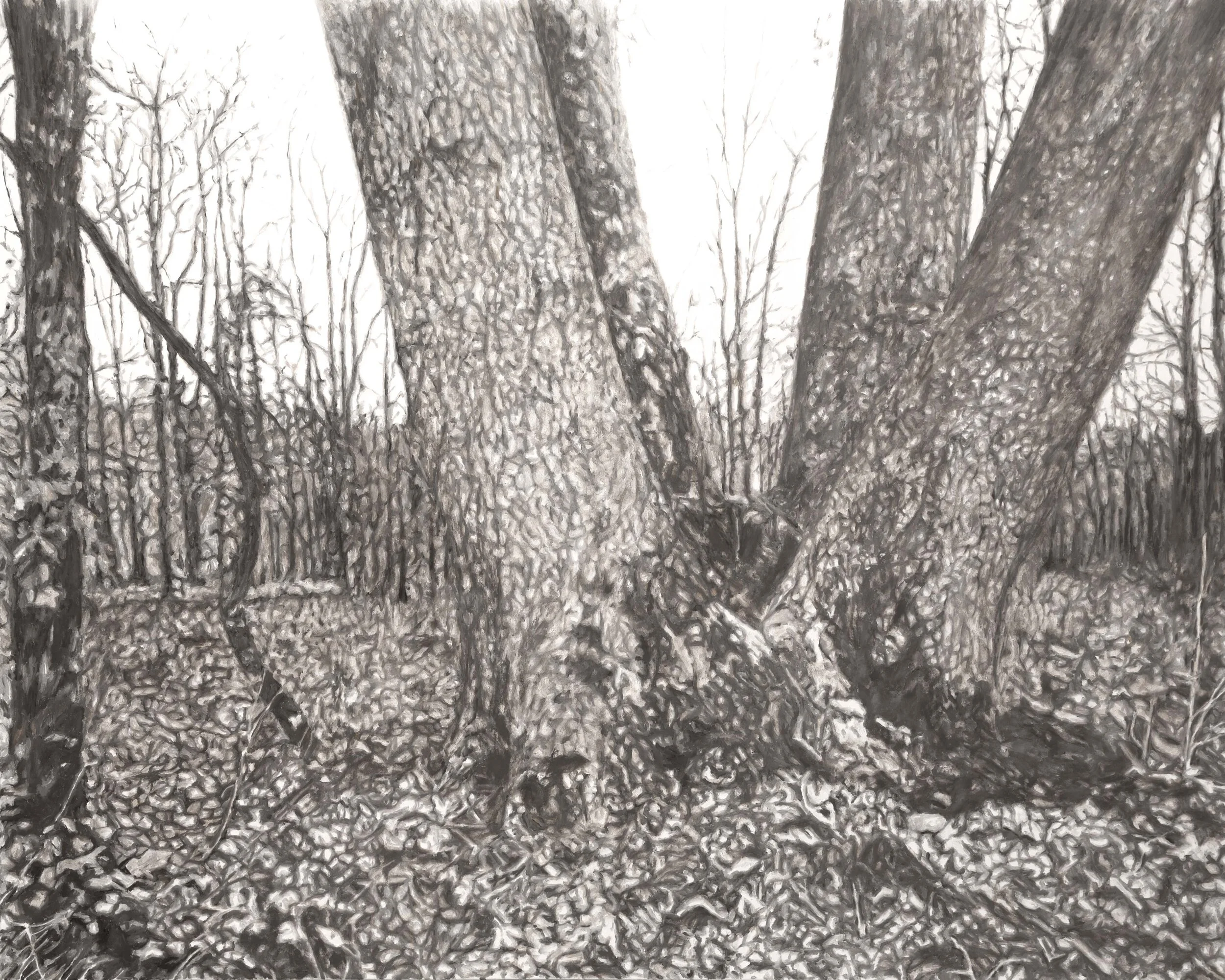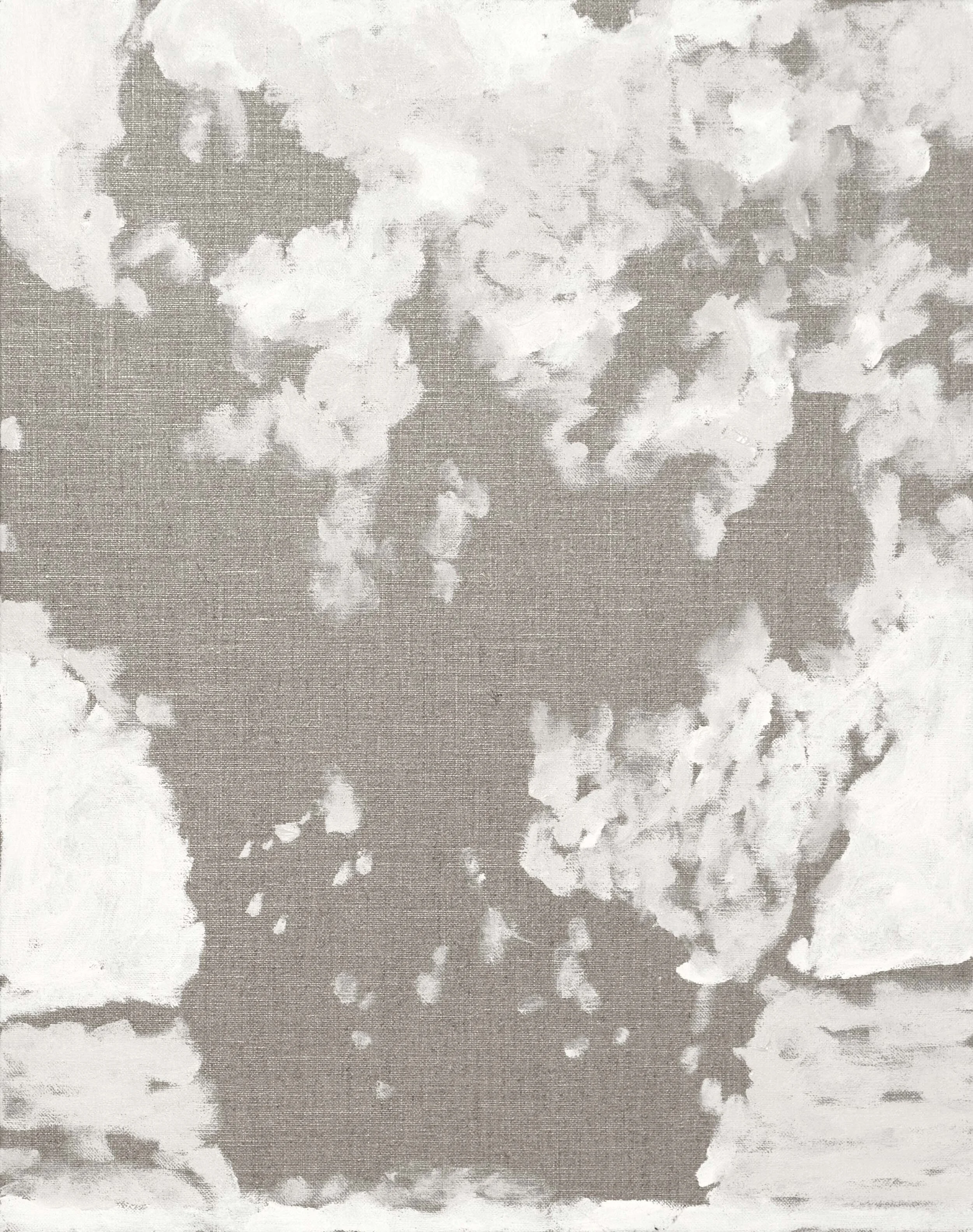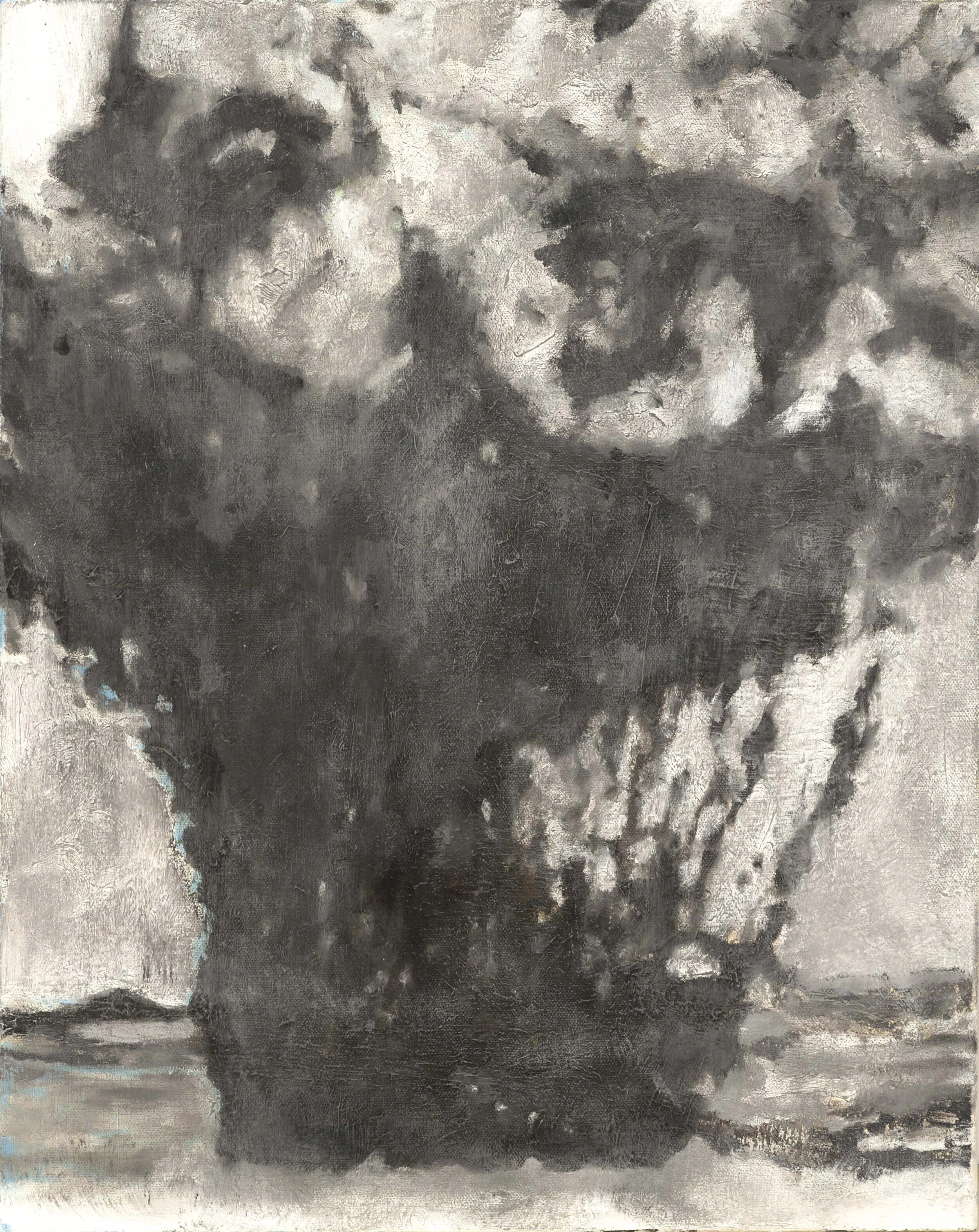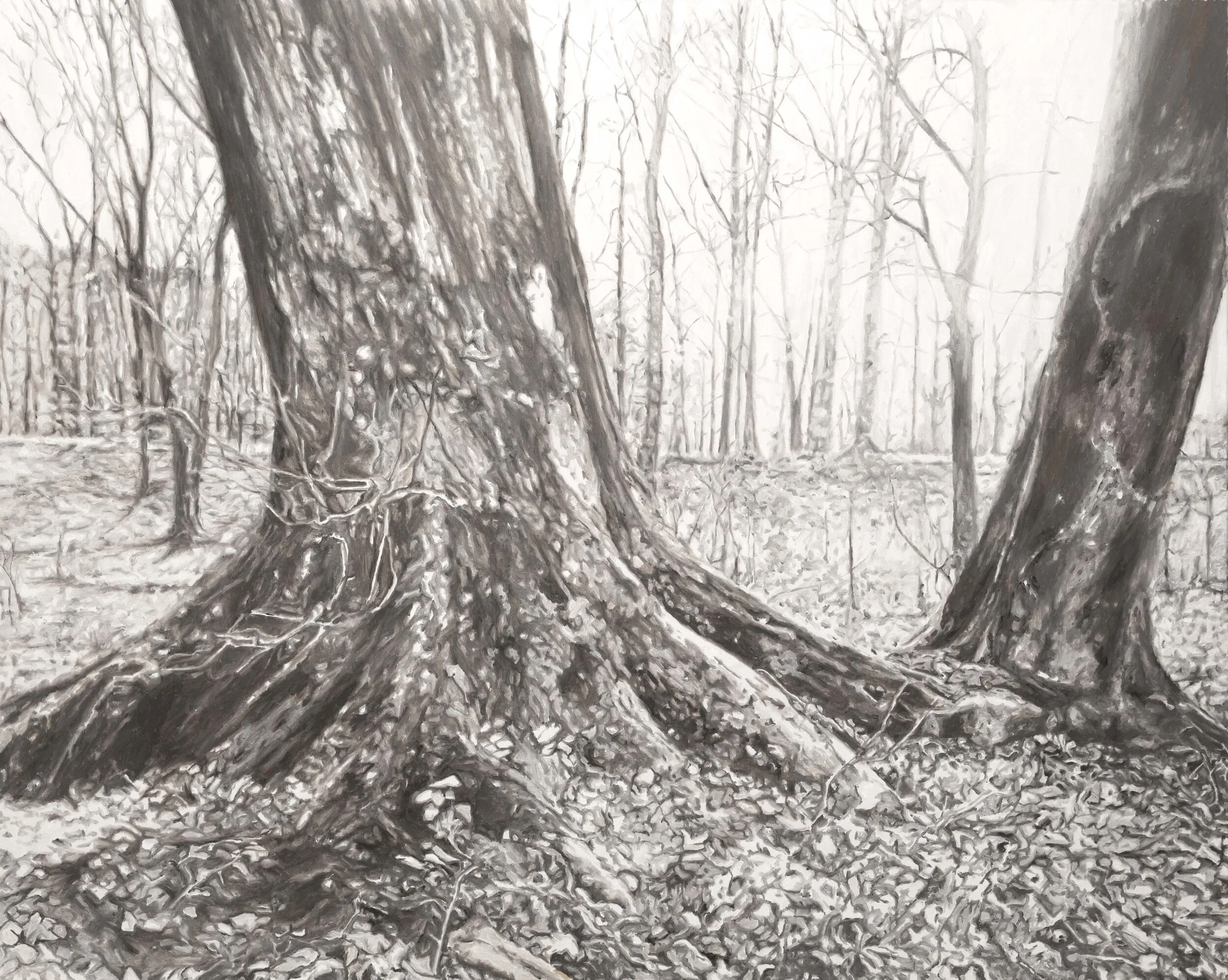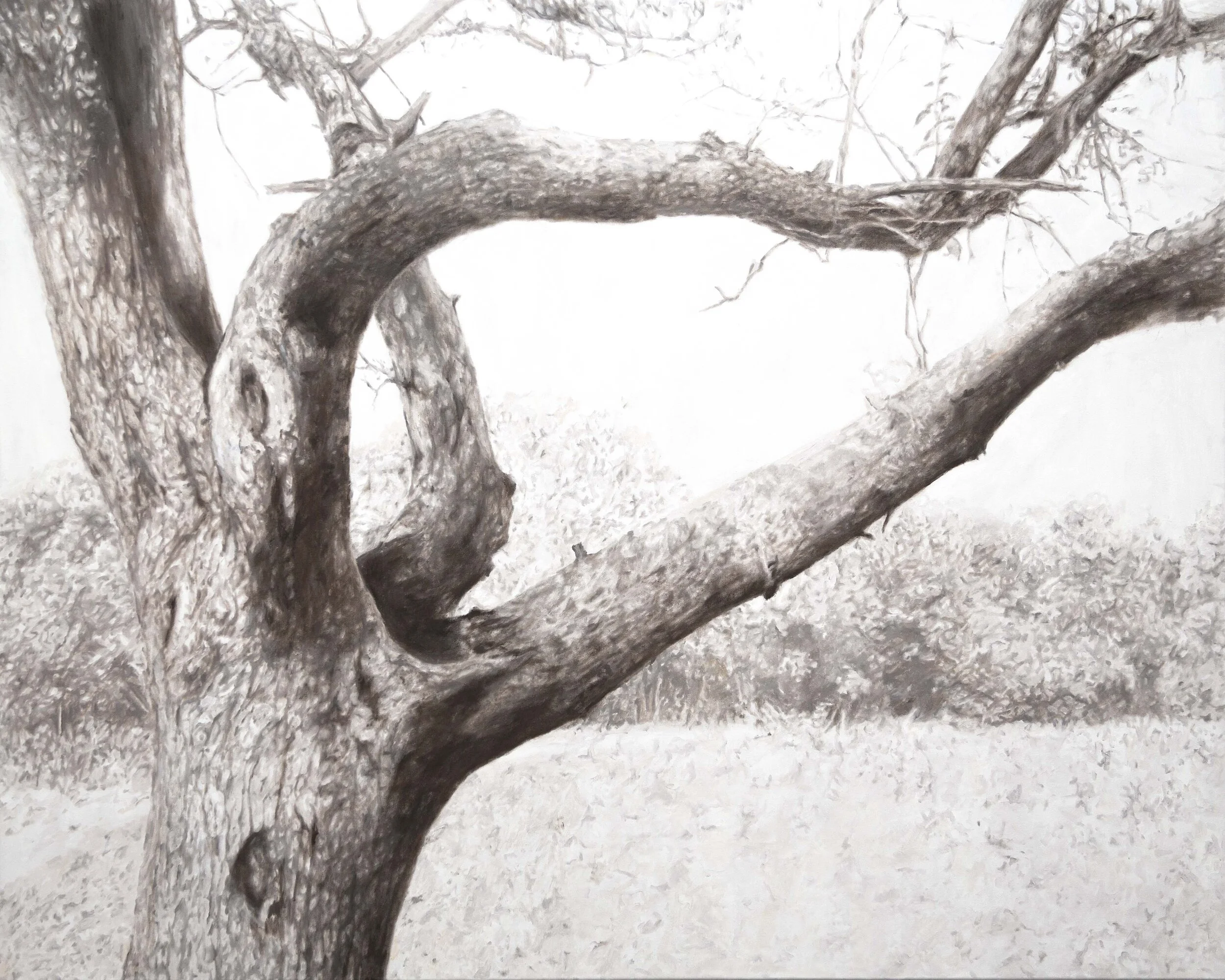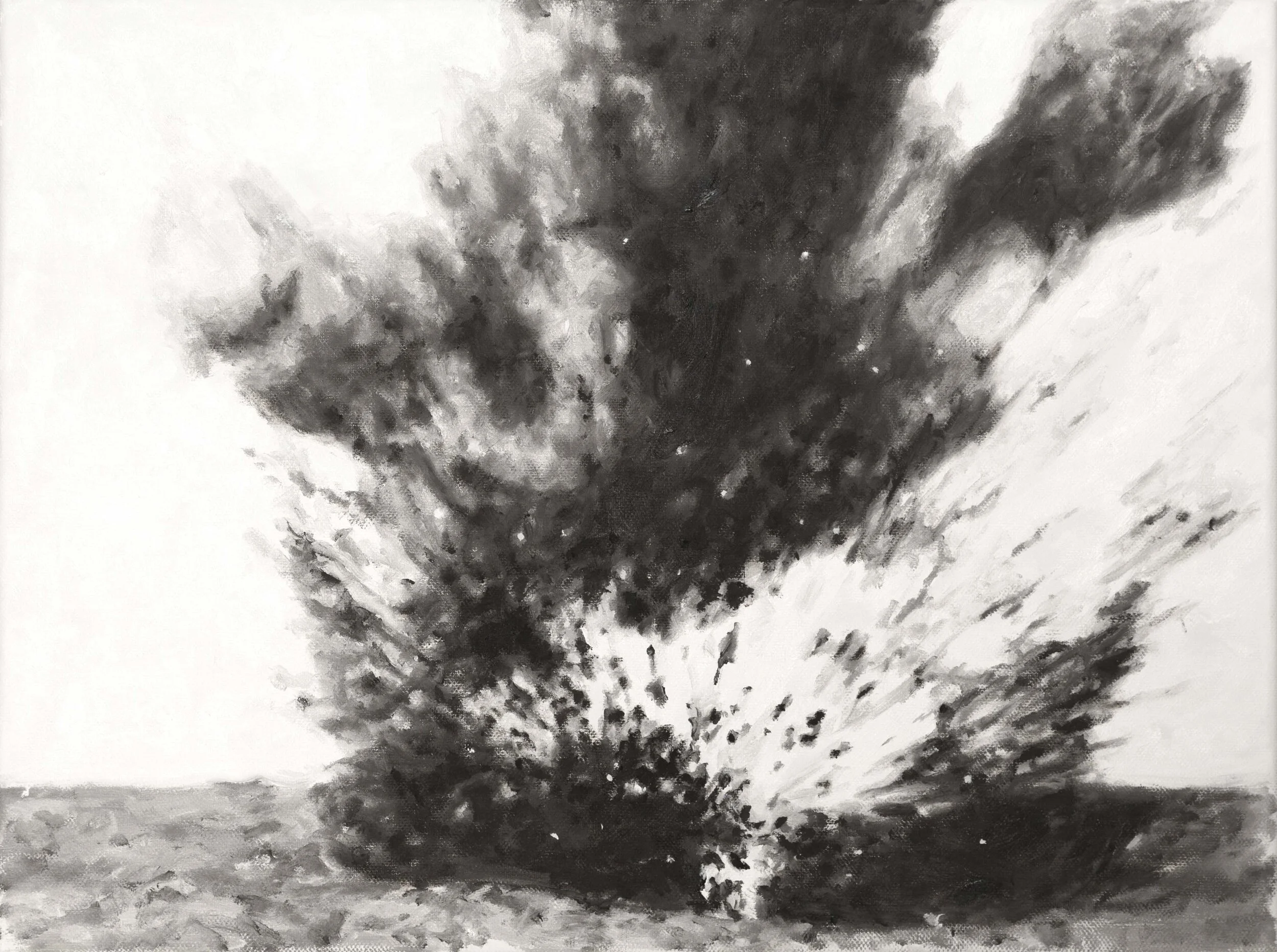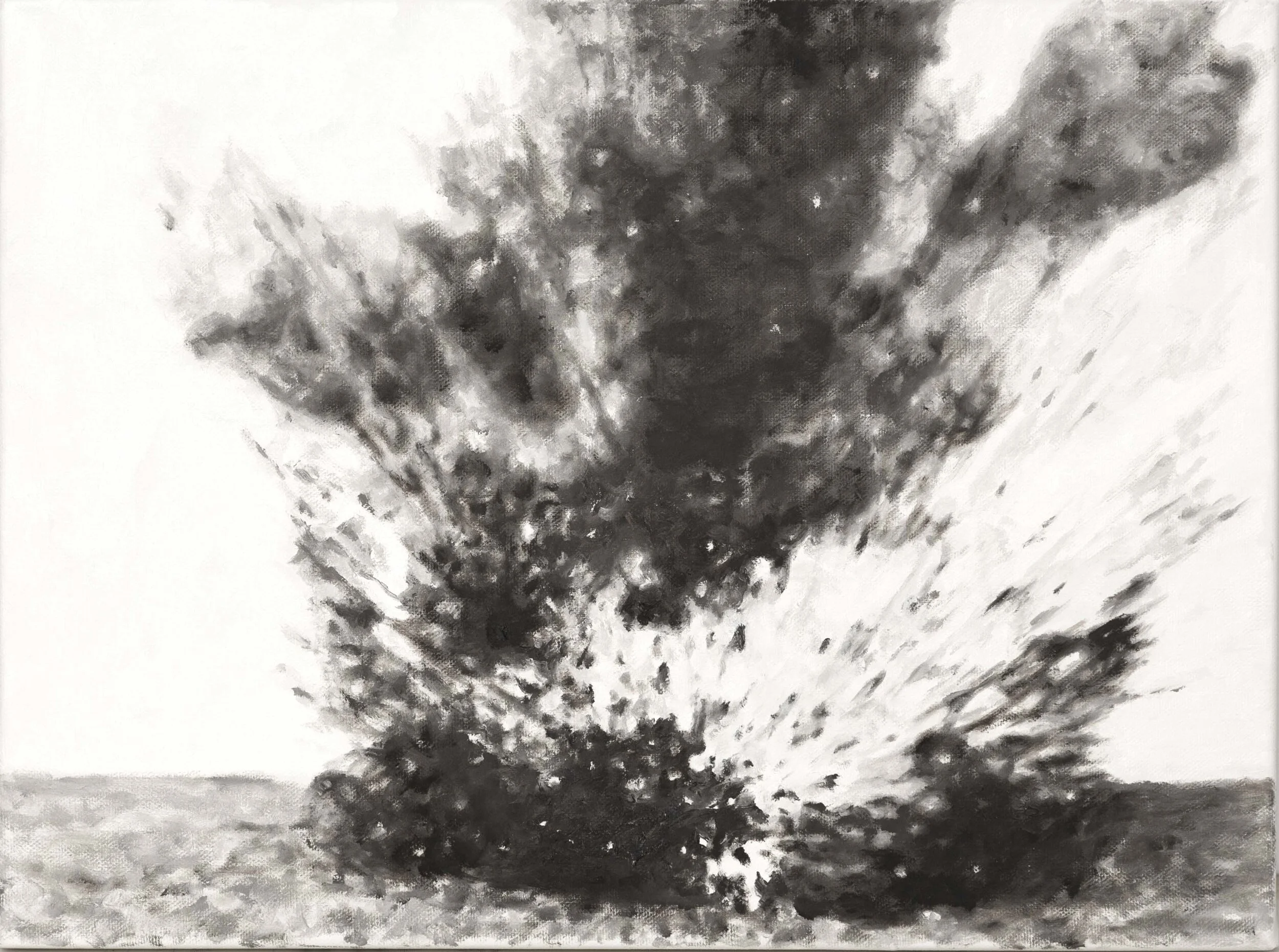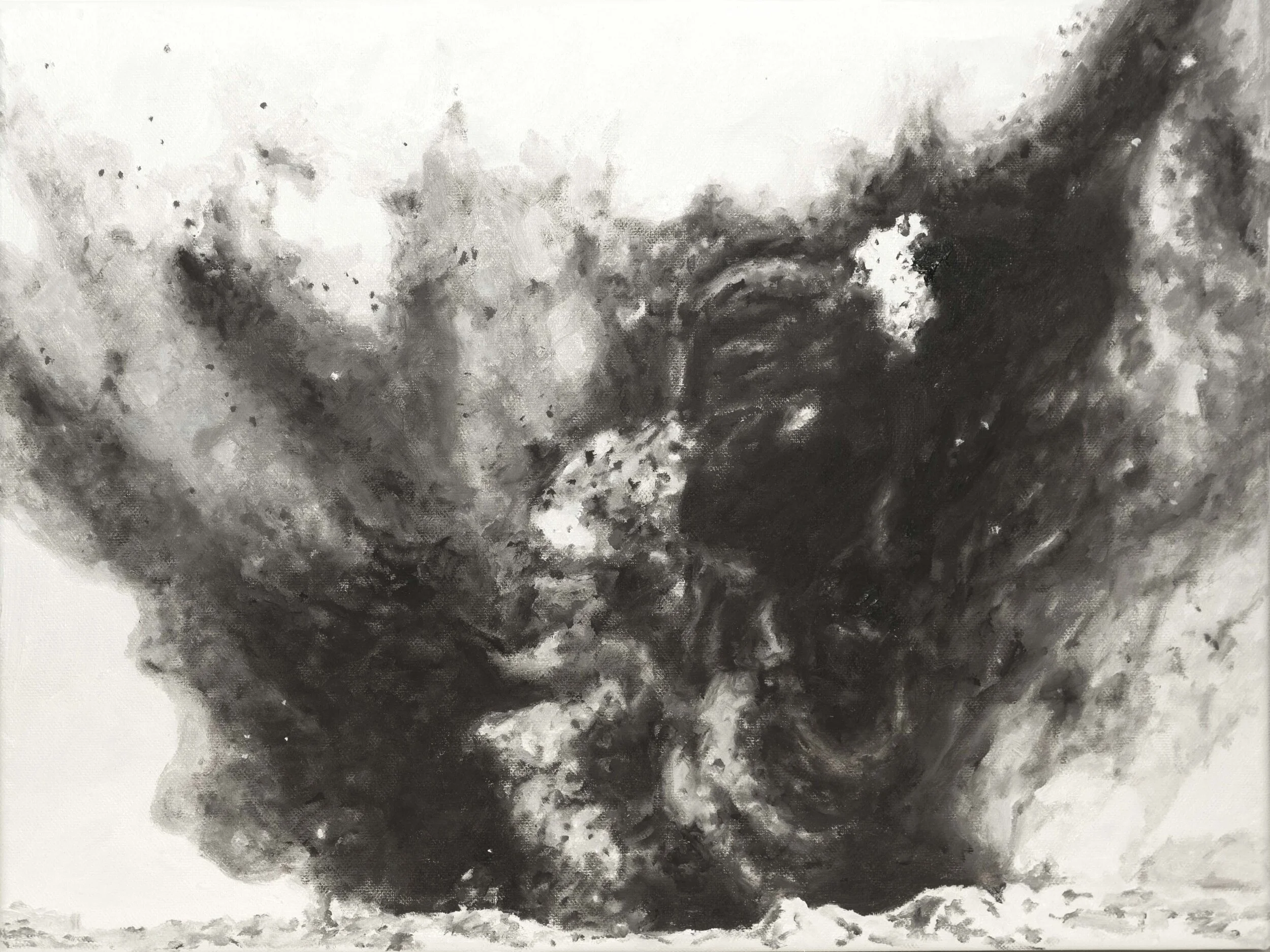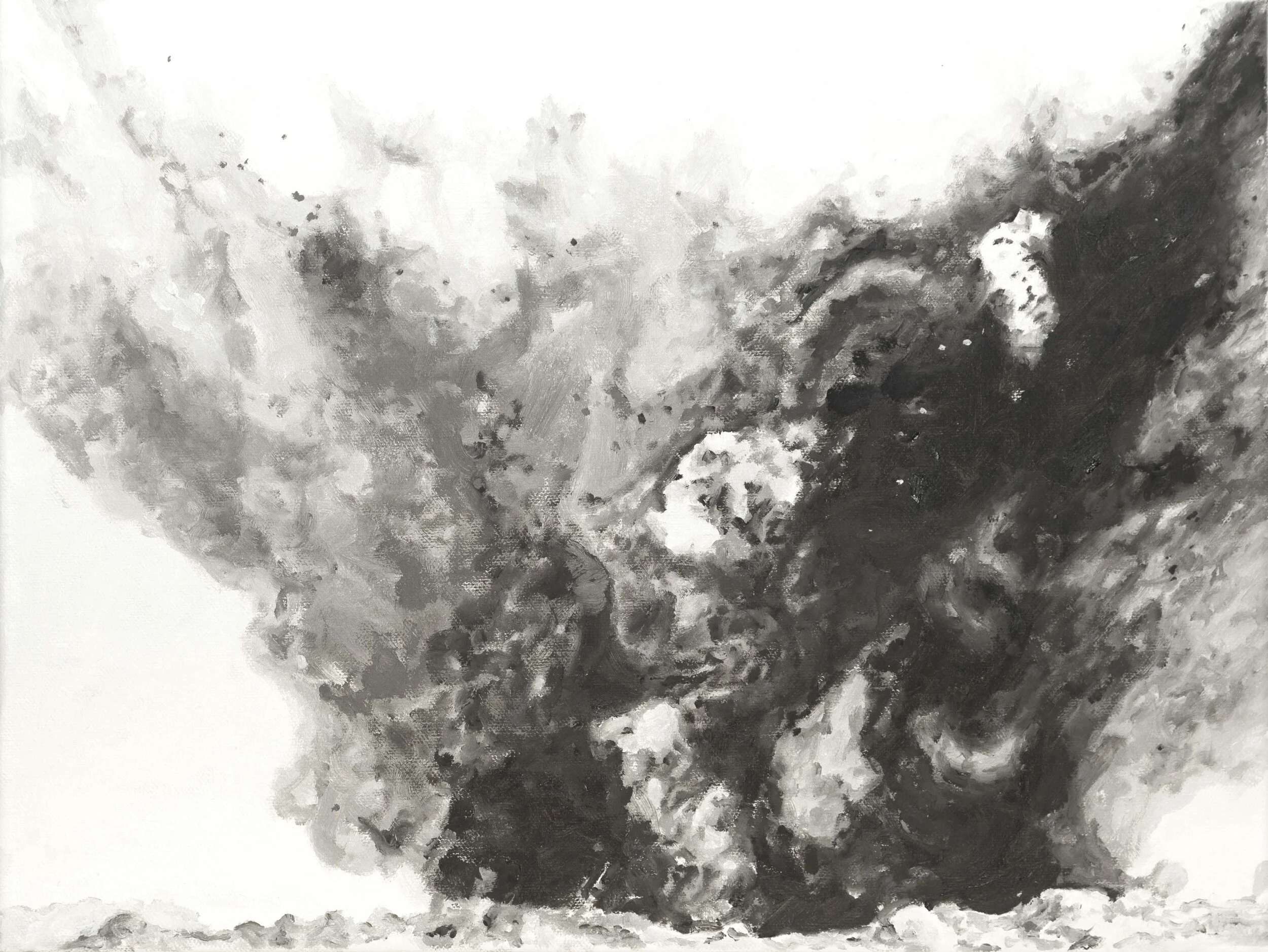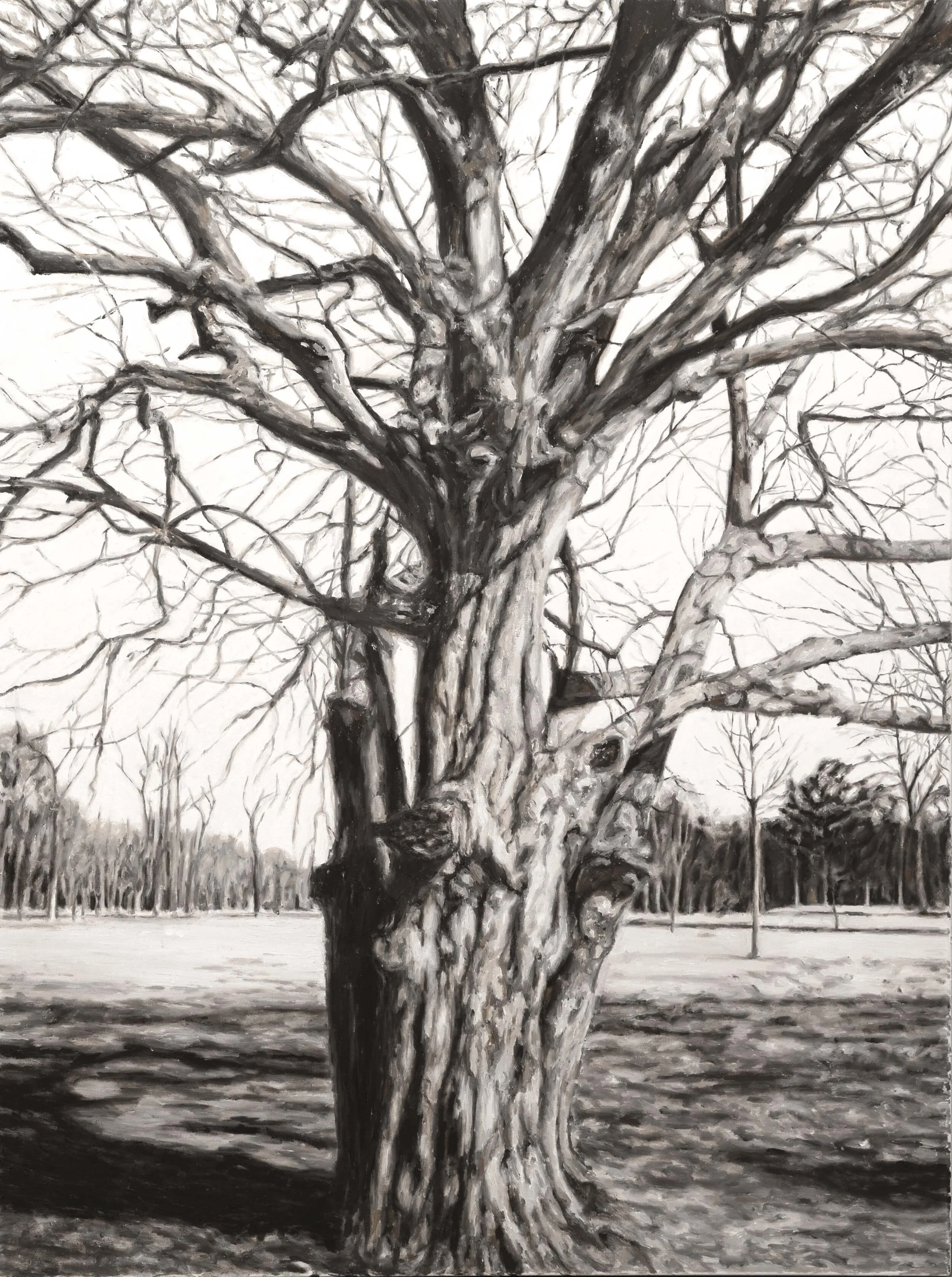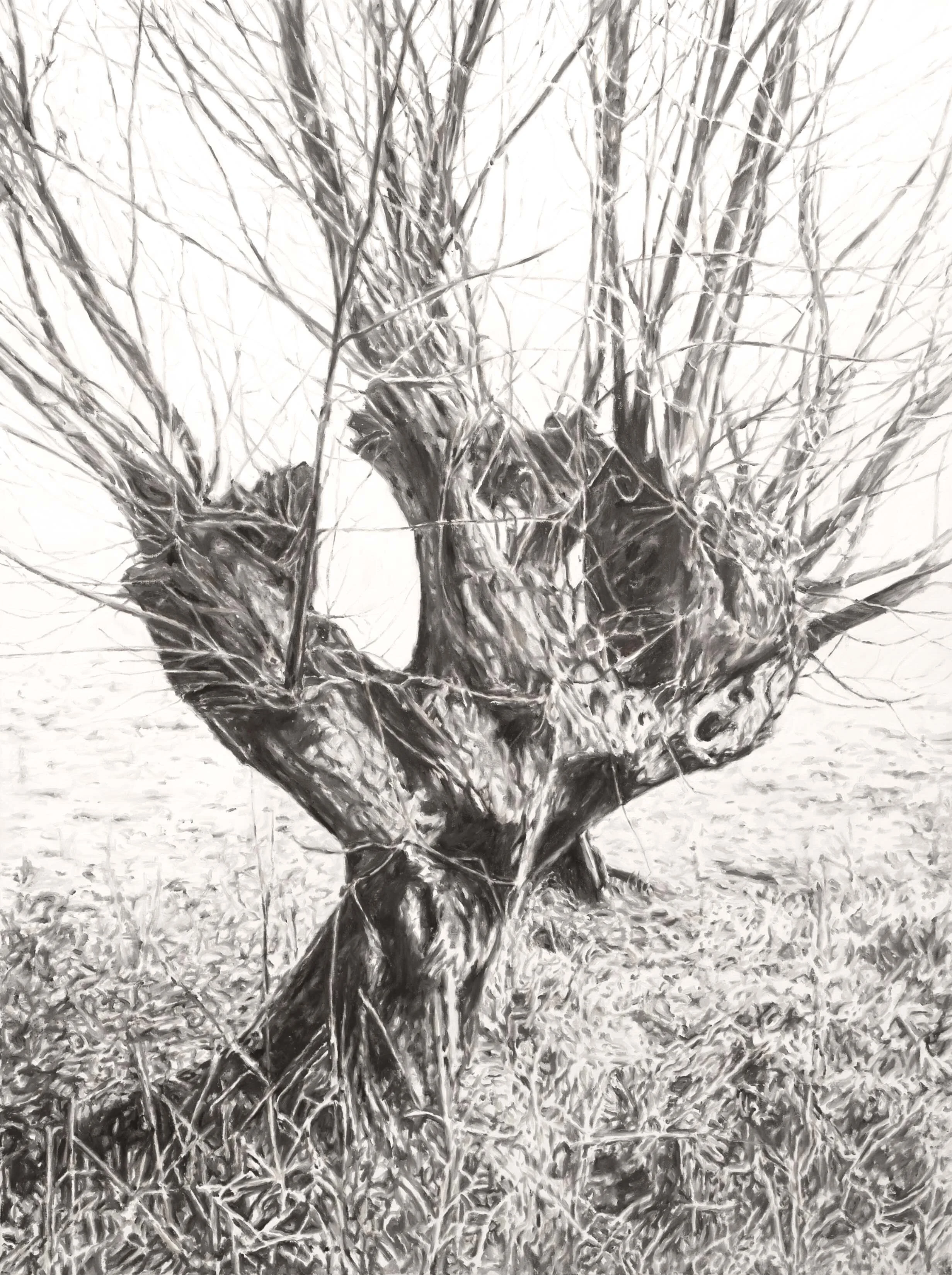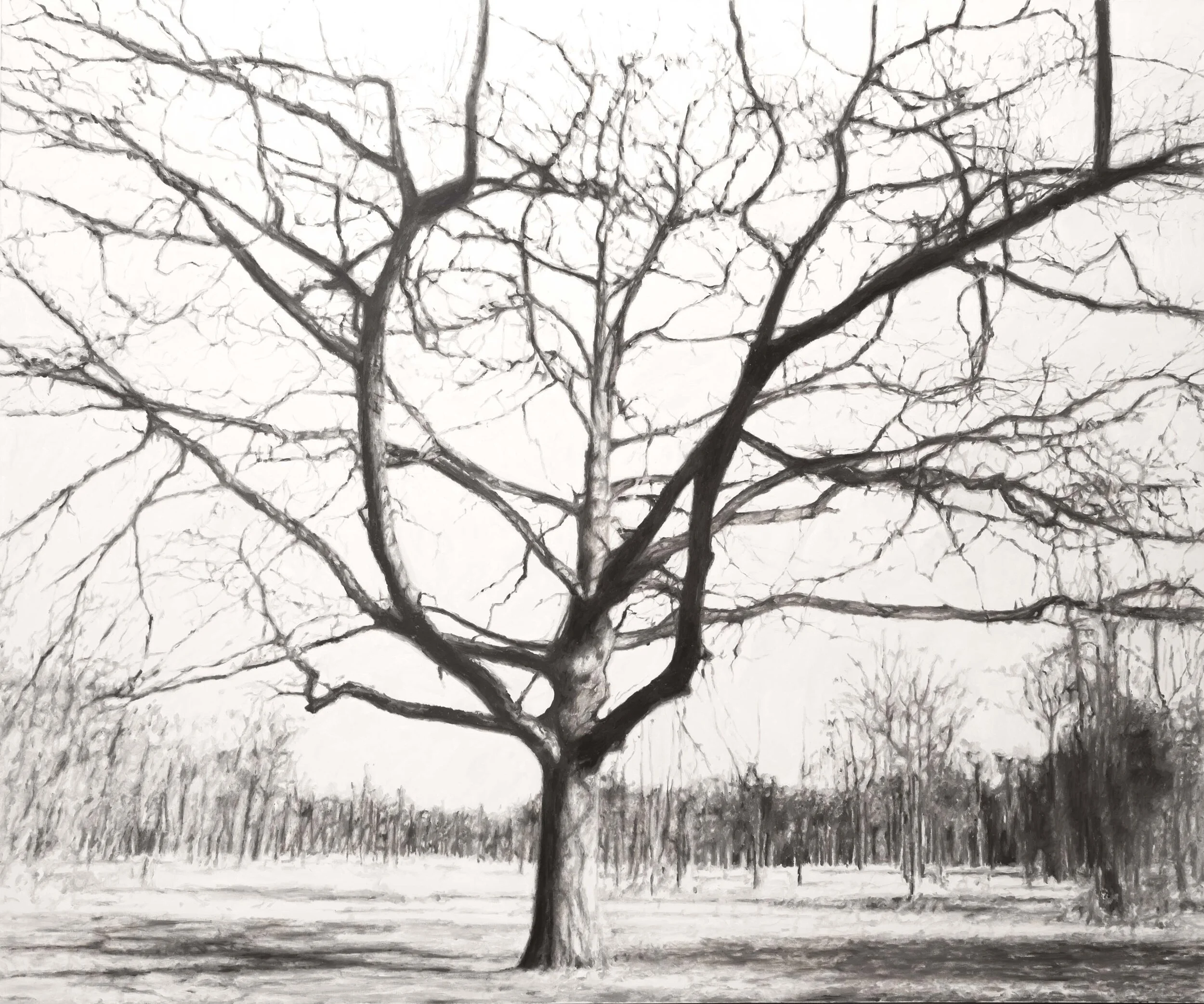RK1
My paintings are an attempt to have a conversation with the past. There is an obvious absurdity to hand-making a new image from an old photograph. But I don’t know how to look with more accuracy, or how to understand something without giving it my full attention. Russell Katz
Terzo piano is pleased to present its first solo exhibition of paintings by Russell Katz guest curated by Marie Elena Amatangelo. The exhibition consists of 34 oil paintings on canvas or linen influenced by early 20th century photography and contrary forces.


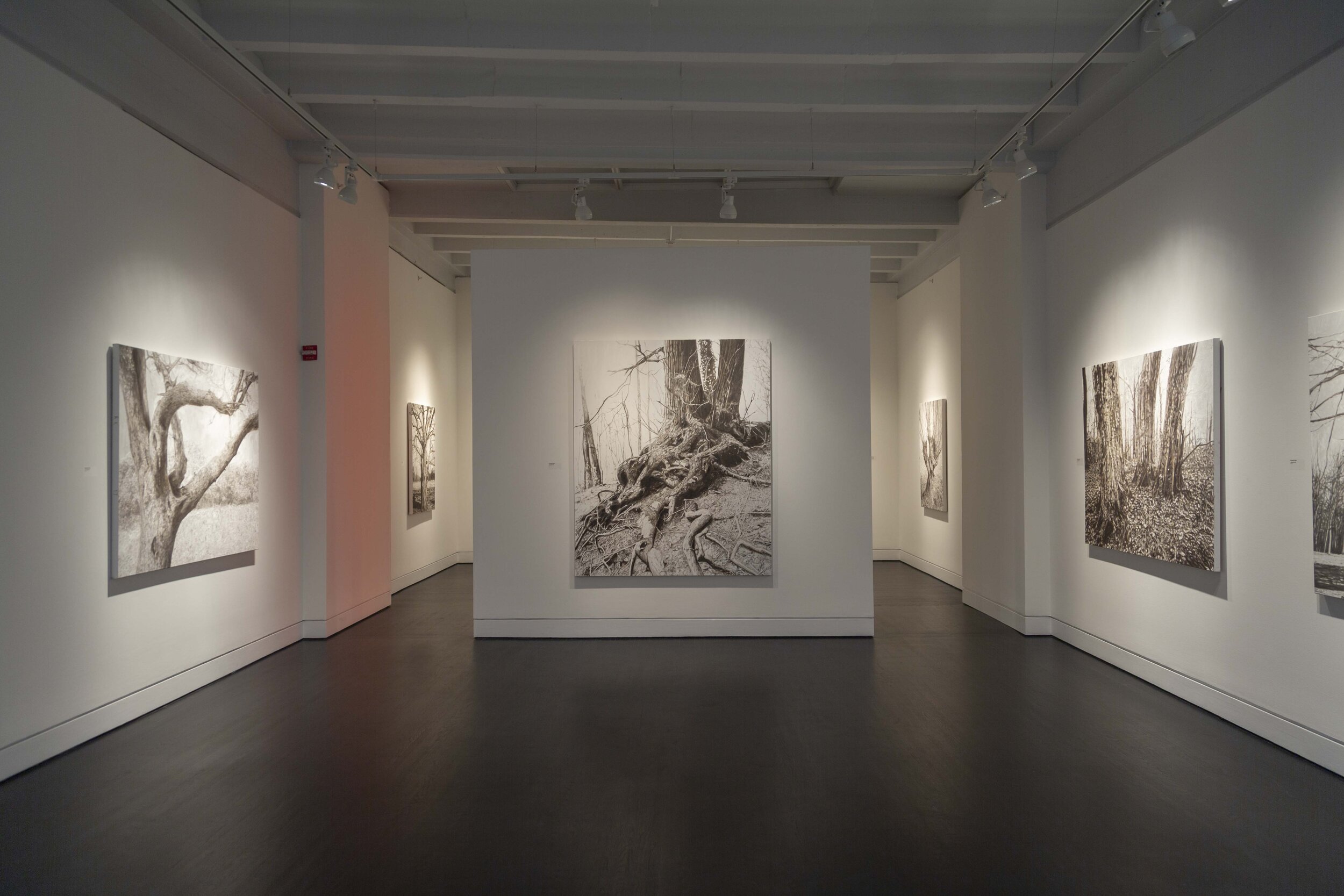

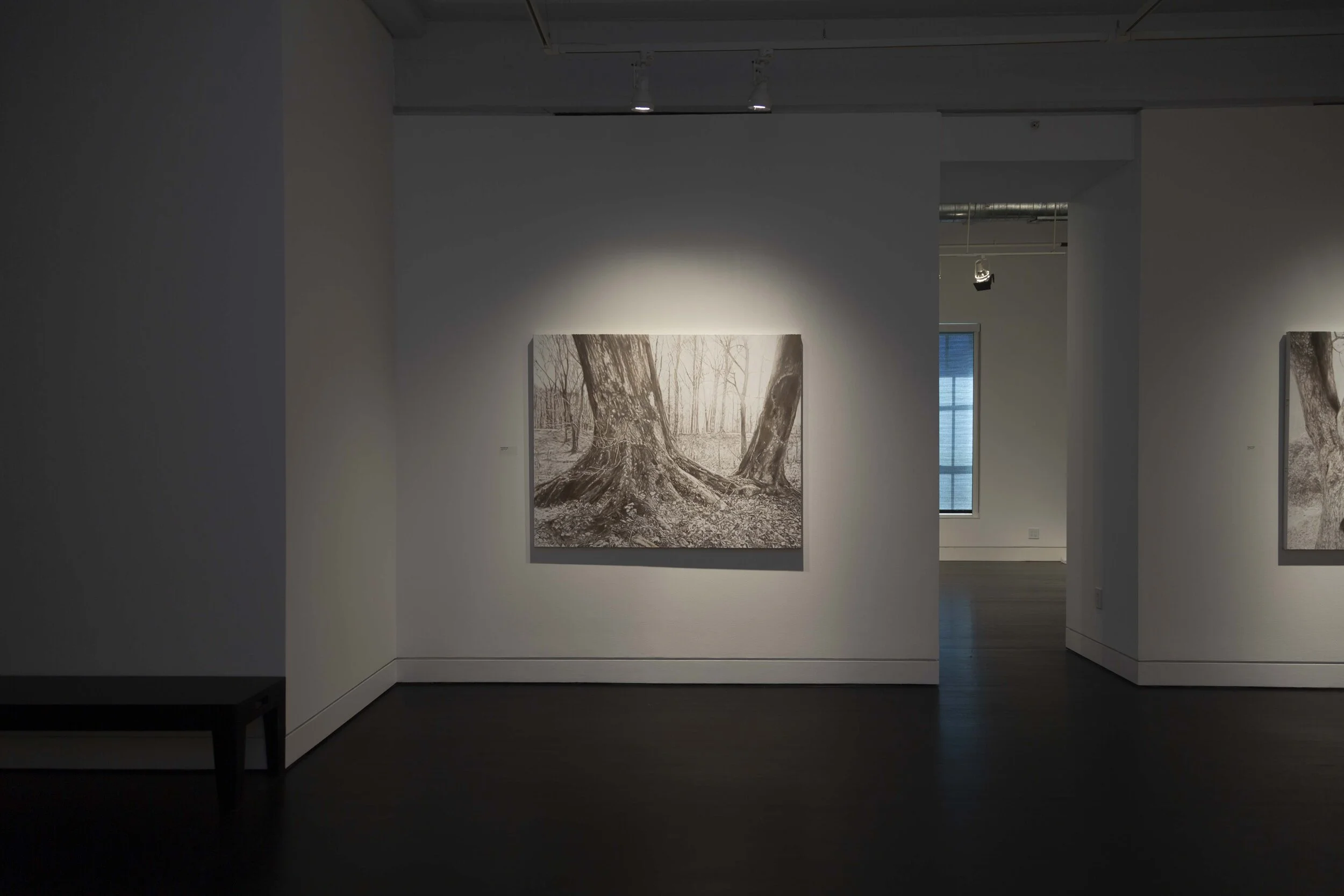
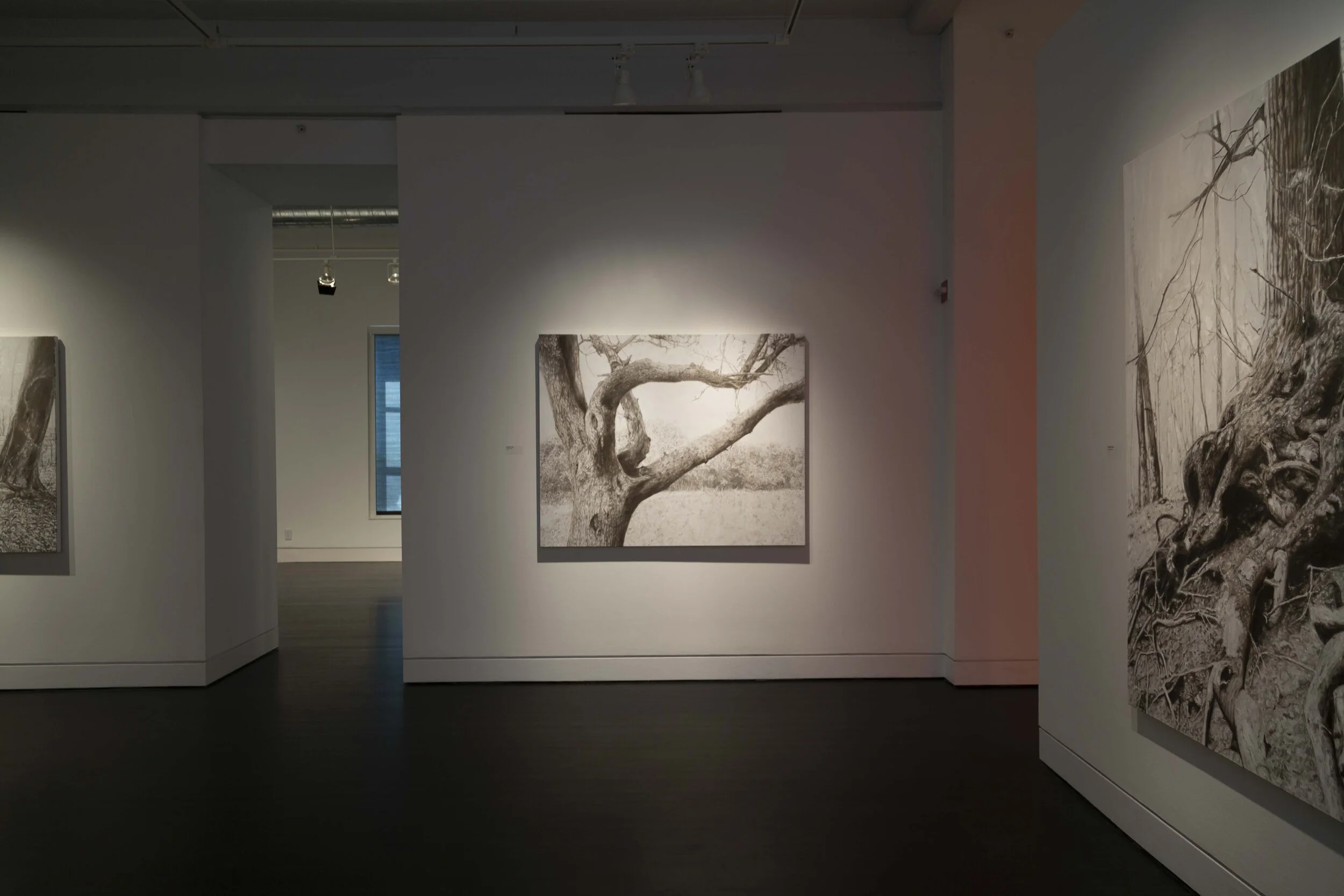
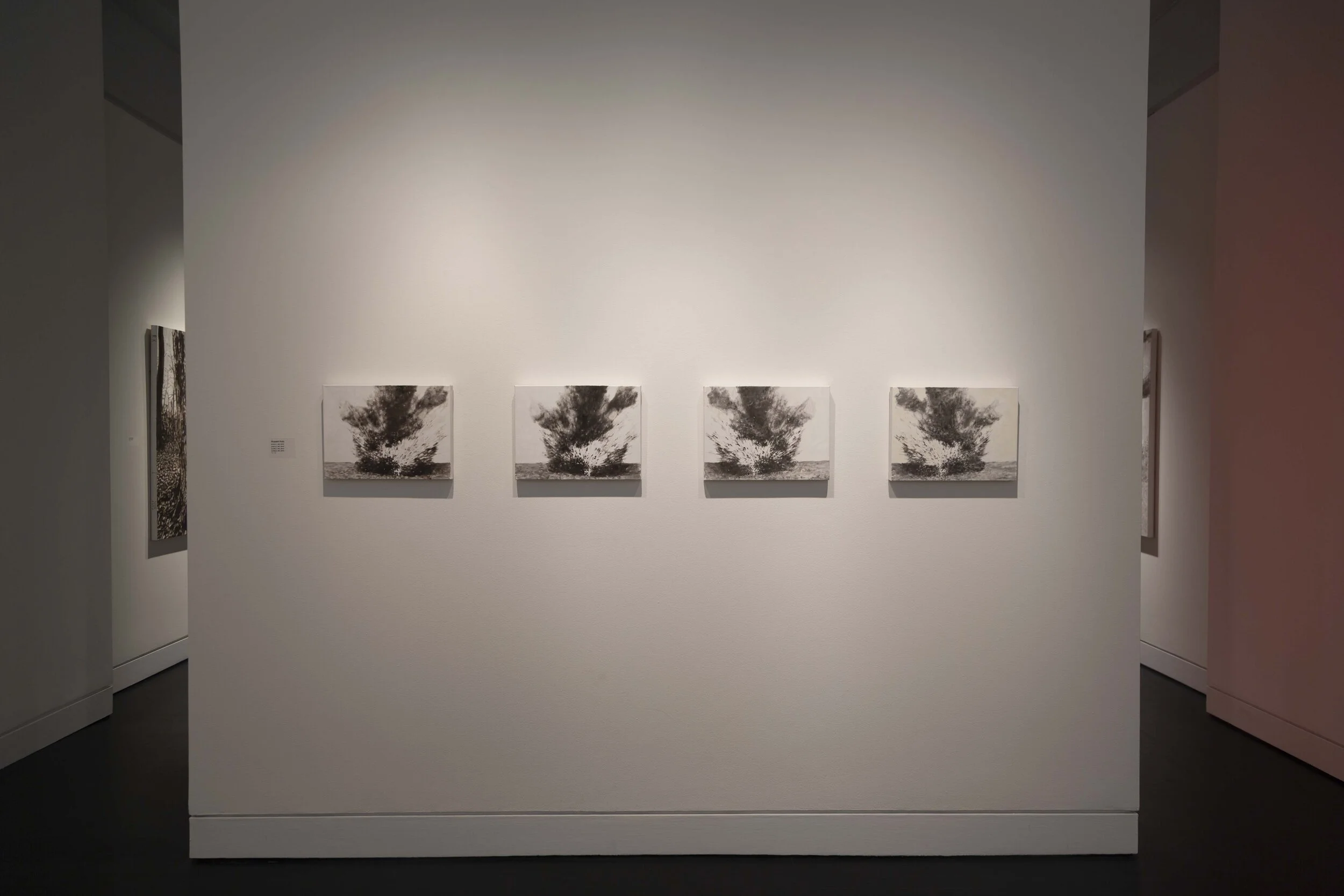
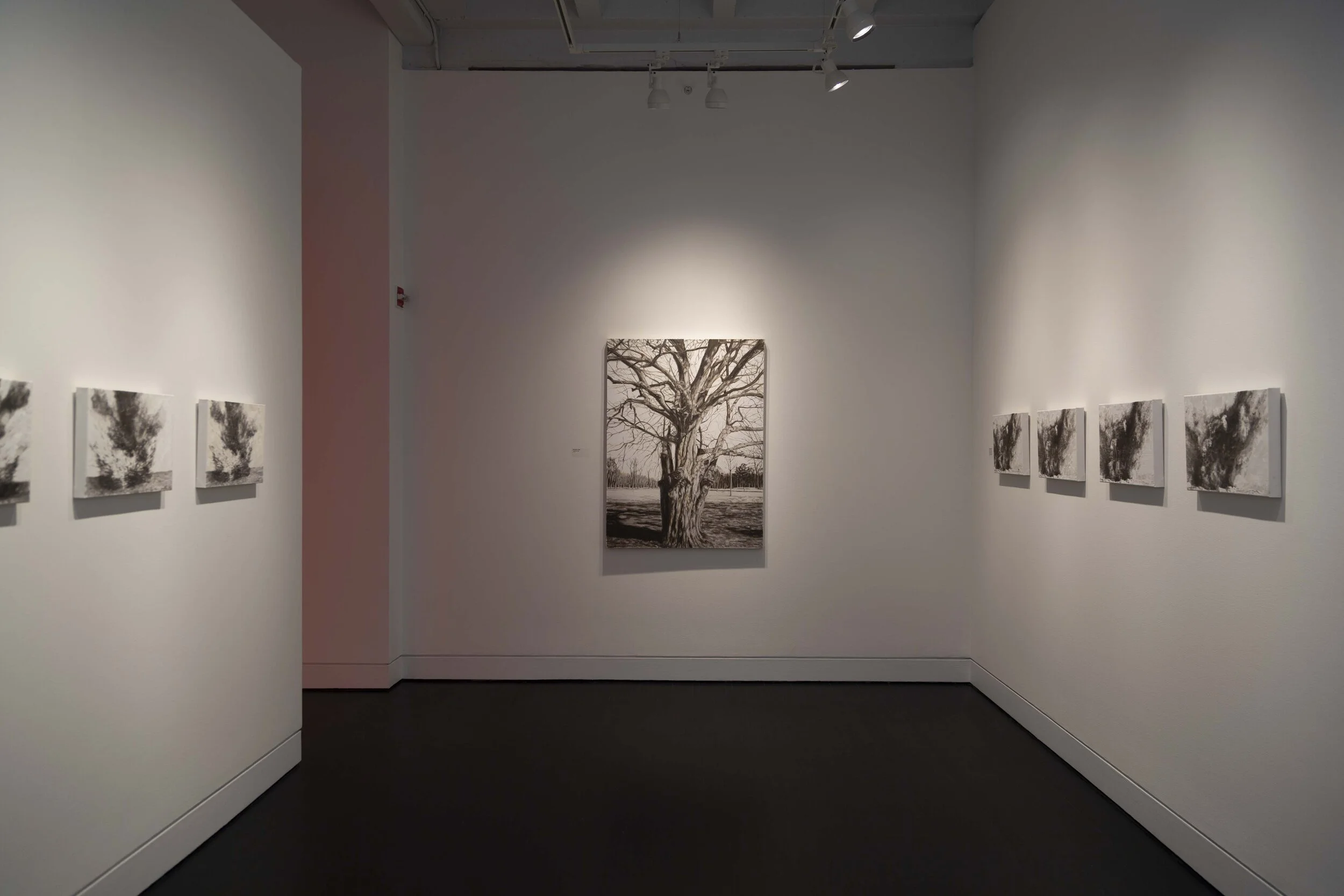
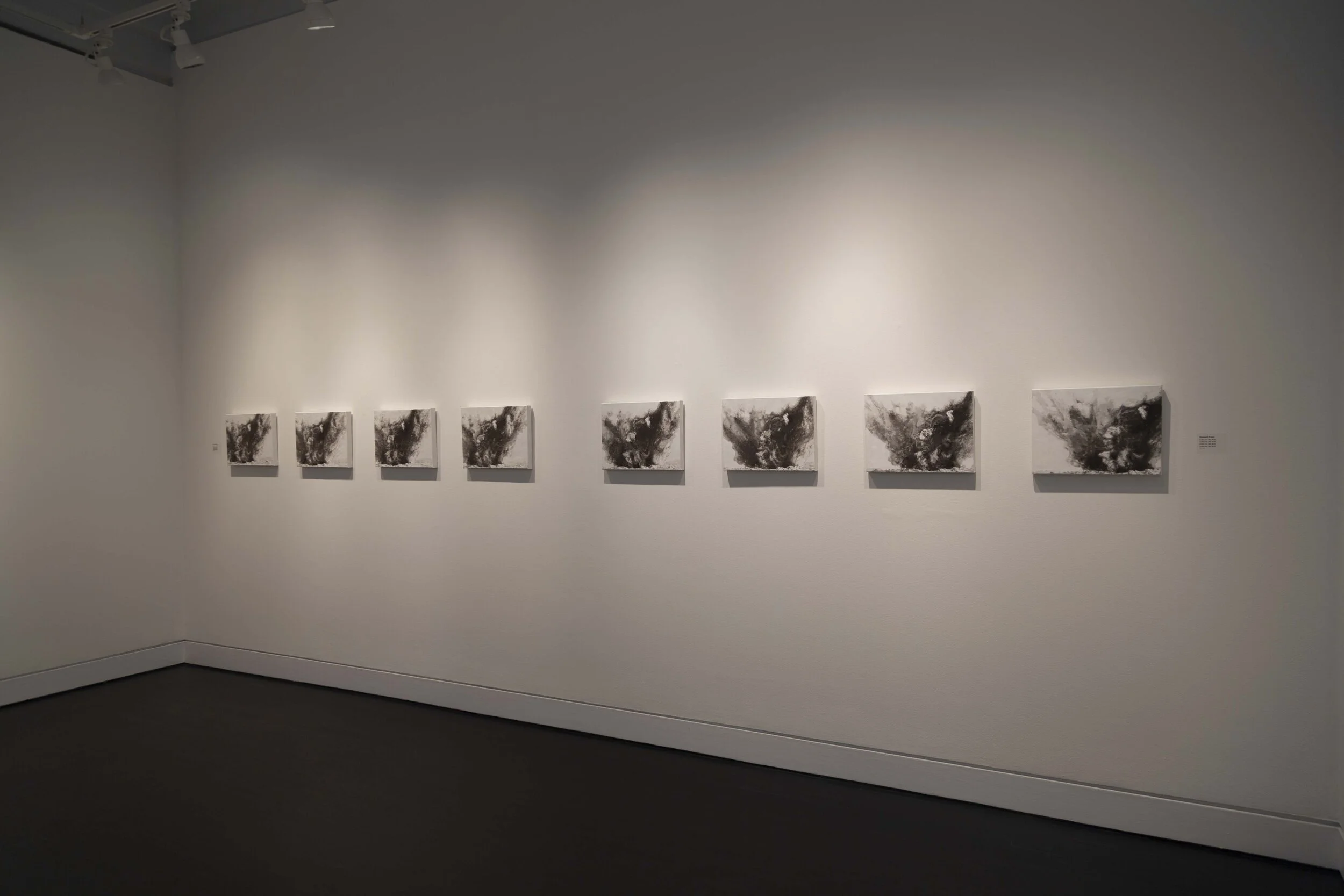
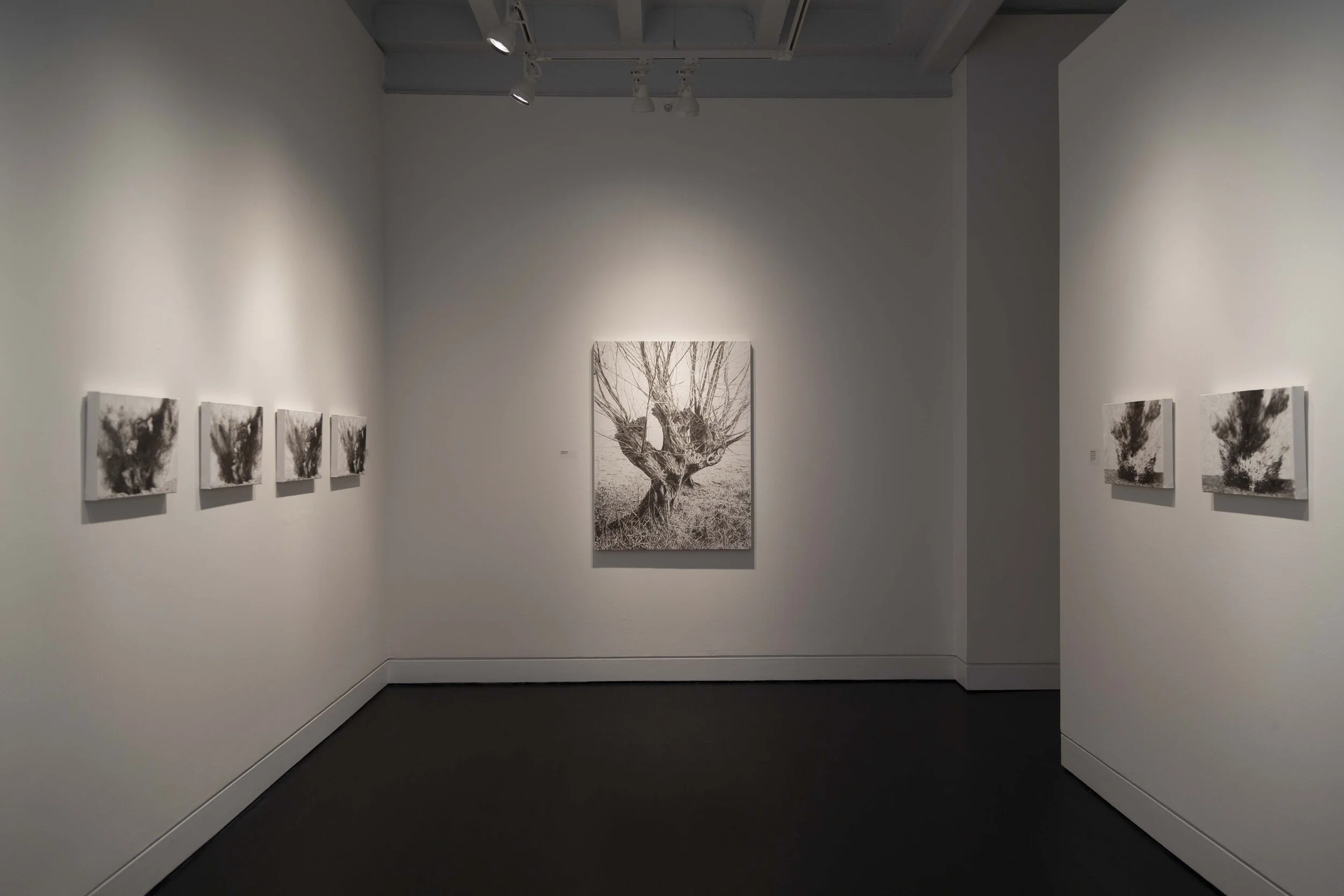
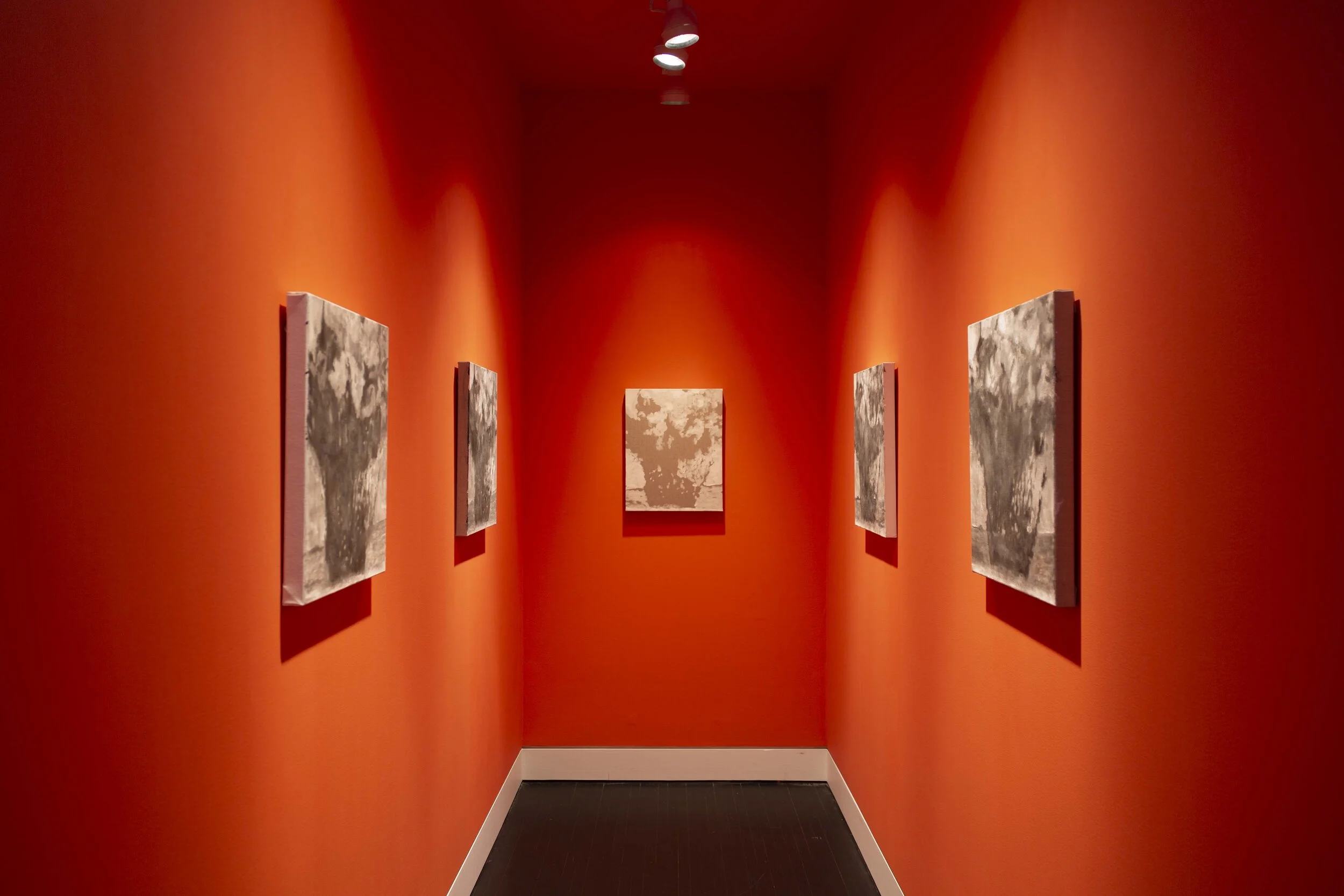
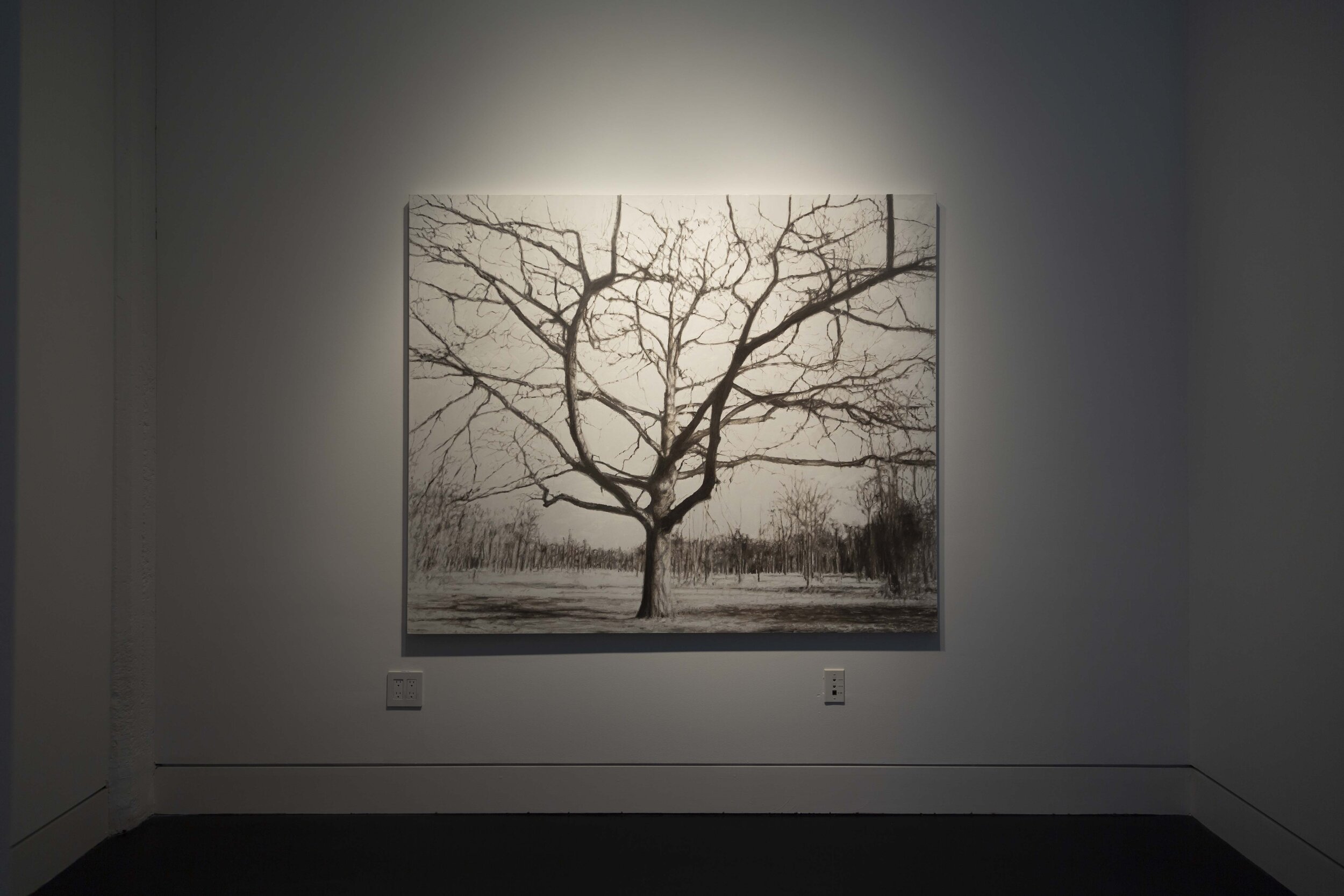
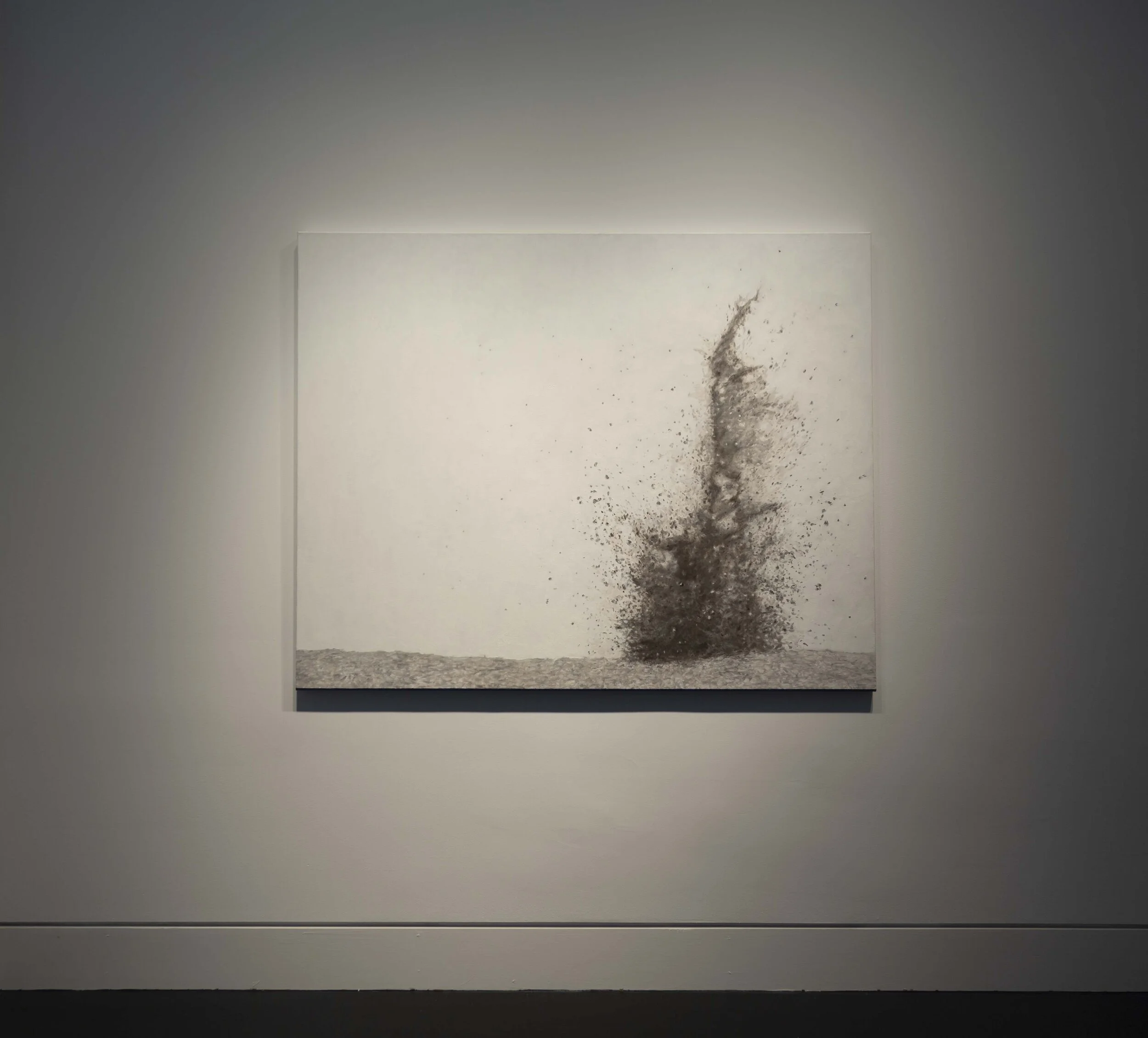
Terzo Piano is dedicated to showcasing the work of both major and under-recognized artists—those vital but often unheard voices that can wake us and move us and give expression to our times.
Russell Katz is such an artist.
In this, both the gallery’s and Katz’s first one-person show, visitors will be awakened to a trance-like mode of seeing and painting—one that takes photographs of the past and elevates them through a supreme act of attention. In the transition from photographic print to paint on canvas, the trees and explosions depicted by Katz undergo an almost mystical transformation.
In the case of the trees, which took years to mature and less than seconds for photographer Eugène Atget to capture, their slow rendering by Katz’s patient, layered brushstrokes animates their textures and once again allows their forms to build over time. Whether seen up close as unfocused images or revealed with the clarity of architecture from a distance, these trees have the power and presence of portraiture.
With the explosions—events that themselves were nearly instantaneous—Katz takes photographic documents of World War I and again spends immense time with them, bringing us into a deeper relationship with their kinetic violence. These frozen moments of the past, which by causing death could stop time, come to life under Katz’s brush, forcing us to linger and absorb them in the present.
Both trees and explosions are connected by the artist’s stylistic integrity, but they have something else in common. In each it is as if the ground, the earth itself, is seeking the sky. And as the soil—upthrust and broken by the life force on the one hand and the death force on the other—becomes something other than itself, we the viewers see with new eyes.
- Giorgio Furioso
Russell Katz’s recent paintings make for awkward partners. By nature, we look for alliances and relationships; instead, we find an uncomfortable tension. Relying on photographs as his primary resource, Katz works from two equally disparate sources. The first, a series of studies by French photographer Eugène Atget (1857—1927) of trees in the park at Saint-Cloud in the Paris suburbs, that was rediscovered at the Bibliothèque Nationale in 1995. John Szarkowski, photography’s greatest curator and writer, noted:
Atget had a deep curiosity about trees, and seldom seemed to lack a pretext for adding a new tree to his collection, or making a new negative of a tree that he had photographed before…Trees appear especially frequently during the first and last decades of his work: during the eighteen nineties, before he had decided to specialize in the documentation of Old Paris, and after the Great War, when he seems to have redirected his life as a photographer toward simpler and more personal goals.
Bereft of their leaves, Atget was free to concentrate on the architecture of his subjects—the solid pillar of a trunk, branches rising like buttresses in reverse, their quietly coiled energy evident even in the dormancy of winter. Katz notes, “What I love so much about Atget’s trees—beyond something formal—is the composition and his use of focus, blurring, diagonals, and how these relationships pull us into the image.” We are drawn in by both the familiarity of the subject, and by Atget’s ability to load the frame with slowly moving tension.
Adjacent to these we find paintings made after mostly anonymous photographs of World War I explosions, arresting the tremendous kinetic energy released by artillery shells at the moment of impact. These Images snapped by photojournalists and soldiers record of the horror experienced on the battlefield and in the trenches. Katz’s paintings are thankfully uninhabited, but the human cost was never far from his mind: “I had started reading a lot about World War I. Artillery killed 70 percent of the people that died in the war—this was a huge delta from previous conflicts. Military leaders were unaware of how much destruction was in their hand. Cavalry charges and infantry formations were still one-on-one exchanges, but the big guns changed everything.”
The difference in Katz’s sources is in the space between the meditative and the immediate. The trunks and roots and branches Atget’s trees invite our gaze – we study them like a fingerprint, moving further into the frame, anticipating the dry crunch of the carpet of leaves underfoot. Looking through a veil of barren branches, we might wonder if every tree will survive the winter, but are consoled knowing that spring is only a few months coming. These battlefield moments, however, are so violent and instantaneous that they could only be captured by the invention of a modern camera with a high-speed shutter. Were we there, and had we survived, the blast would have struck with such immediacy that the moment itself would barely have registered – after we had recovered from the concussion of the blast and the ringing in our ears, we would be left staring at a rising cloud of dust and debris, attempting to piece together what had just happened.
Katz’s paintings call two specific photographic images to mind, also evidence of past and present. The first is George N. Barnard’s The "Hell Hole", New Hope Church, Georgia, ca. 1866, from his Civil War album, “Photographic Views of Sherman's Campaign.” Although hundreds of harrowing images were made during that conflict, wet plate photographers were not on the front lines—the scale of their equipment and length of time to expose and process a negative relegated them to the aftermath. Barnard relied on the shattered trunks of this forest thicket to reveal the ferocity of battle, to suggest the terror felt by soldiers on both sides as musket and cannon fire tore through a landscape that offered little shelter. The forest was likely quiet the day that Barnard exposed his collodion negative, but the evidence of the battle’s totality would have been impossible to ignore. The second image is a 2008 charcoal drawing by Robert Longo, Untitled (Hercules), based on an archival photograph of the first Chinese hydrogen bomb test in 1967, almost exactly a century after Barnard’s exposure. The distance between the intimate violence documented by Barnard and Longo’s rising cloud—between a soldier cut down on the battlefield and the potential for global nuclear warfare—perhaps finds its midpoint in the escalation of our destructive capacity in the First World War, and in its anonymity and indifference.
Katz calls our attention to this inflection point and, by extension, to the urgency of our current moment, pointing to a time when a choice was there to be made. It is sobering to think what might have been different if the modern world that was born from World War I had turned its back on the violence of its origins; even more so to think of the challenges we face today regarding our survival and the possibility that our decisions will be not any more thoughtful this time around. The photographer Robert Adams wrote, “We catch ourselves thinking… that it would have been merciful if Columbus had been wrong and the world flat, with an edge from which to fall, rather than a circular cage that returns us to our mistakes.” Likewise, a detonation would be merciful, because it would be swift. But that isn’t how our story will play out—it will drag slowly forward, indifferent to our suffering along the way. There is, of course, a great irony in all of this. The thermonuclear arsenals that the United States and its allies and antagonists stockpiled were intended to protect political, economic, and social structures that their very use would have destroyed, yet we lived under the threat of that dark sun for more than half of the twentieth century. And now, all the weapons we have developed, from the Civil War to World War I to the Jornade del Muerto, have been rendered irrelevant in the face of a potentially greater catastrophe.
Hindsight is chilling, as is knowing that we were incapable of looking at the horror of The War to End All Wars or the aftermath of Hiroshima and Nagasaki and restraining even the least of our inclinations. Now, we must ask ourselves if we are willing to arrest even some of the elements of global economic and political power that are rushing to seal the fate of the planet. Will we be able to recognize the tipping point? In these paintings, of perhaps our best and worst inclinations, Katz asks if we can make this experiment work, and—if given one last chance—will we:
We have the power to completely destroy. And the ability to think we can separate ourselves from nature. An ongoing argument arises at any suggestion that we temper our behavior—some of us seem to want to destroy the things we need just to prove we don’t need them. Violence is an integral part of life; it can be either destructive or creative. There is violence in the trees, their effort, struggle to survive, with scars and damage, but also generosity. I think this is what Atget was getting at with his photographs – the imperceptibility of their perseverance. We need them more than they need us.
Atget’s trees make this last point clear—we need them more than they need us. He photographed them at the beginning and again at the end of his career, on either side of the First World War. He must have recognized something in their steady persistence and determination—if not hope, then perhaps possibility.
© Toby Jurovics, 2020

